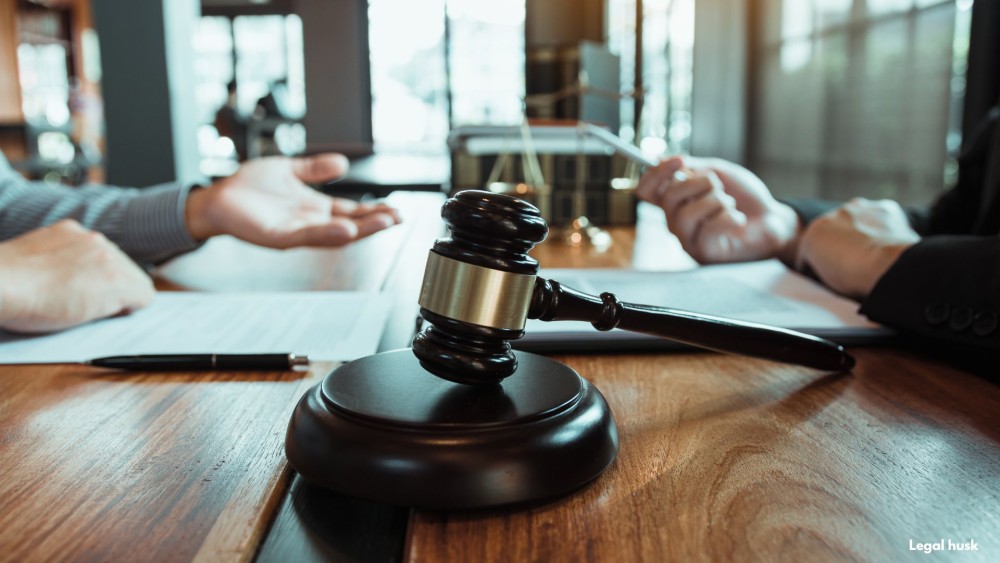Get Your Legal Documents Now!
Whether you are dealing with a complex family matter, facing criminal charges, or navigating the intricacies of business law, our mission is to provide you with comprehensive, compassionate, and expert legal guidance.

Is someone infringing your IP? Learn how to file a clear and compelling complaint to protect your intellectual property rights and stop unlawful use in its tracks.
Intellectual property (IP) is one of the most valuable assets a business or creator owns—and protecting it is critical. When your work is copied, brand misused, or ideas stolen, a legal complaint becomes your first step toward justice. Filing a well-drafted complaint empowers you to stop infringement, recover damages, and send a strong message that your rights are enforceable.
This guide will show you how to use complaints to protect your IP—whether it's a copyrighted design, trademarked logo, patented invention, or confidential trade secret.
You may need to file a complaint in response to:
Copyright Infringement: Unauthorized copying, distribution, or public display of creative works
Trademark Infringement: Misuse of logos, names, or brand identifiers that cause confusion in the market
Patent Infringement: Use or sale of a patented invention without permission
Trade Secret Misappropriation: Theft or disclosure of confidential business information
Counterfeiting & Cybersquatting: Fake goods or domain name hijacking to mimic your brand
🎯 A complaint allows you to formally assert your IP rights and pursue legal remedies through the court system.
Identify the court (usually federal for IP matters)
List plaintiff(s) and defendant(s)
Include a case number if available
Federal courts have jurisdiction over most IP matters
Explain why the chosen venue is appropriate (e.g., where the infringement occurred or where the defendant operates)
Plaintiff: Provide details showing IP ownership (e.g., registration numbers, contracts)
Defendant: Describe their involvement in the alleged infringement
Detail the protected work or asset (e.g., patent, copyrighted content, trademark)
Explain what the defendant did, how it violates your rights, and when it occurred
Attach evidence such as screenshots, product comparisons, receipts, or expert reports
Structure your claims under relevant laws, including:
Copyright Infringement: 17 U.S.C. § 501
Trademark Infringement: Lanham Act, 15 U.S.C. § 1114
Patent Infringement: 35 U.S.C. § 271
Trade Secret Misappropriation: Defend Trade Secrets Act, 18 U.S.C. § 1836
Each claim should stand on its own, clearly outlining how the defendant’s conduct violates your rights.
Spell out what you want the court to do:
Injunctive Relief: Stop the infringing activity
Monetary Damages: Recover financial losses or statutory damages
Seizure of Goods: Remove counterfeit or infringing products from the market
Attorney’s Fees: Ask the court to order the defendant to pay legal costs
Sign the complaint or have your attorney do so
Some courts require a sworn statement verifying the accuracy of the complaint
Submit the complaint and pay the filing fee
File electronically or in person, depending on the court’s system
Deliver the complaint and summons via approved methods (e.g., personal service, certified mail)
Proper service ensures the case can proceed without delay
The defendant may:
File an Answer admitting or denying the claims
File a Motion to Dismiss
Raise counterclaims
Be ready to proceed with discovery, motions, or settlement discussions.
Defendants may try to avoid liability with these arguments:
Fair Use (Copyright): The use is allowed for education, commentary, or parody
Lack of Confusion (Trademark): No risk of consumer misunderstanding
Patent Invalidity: The patent is unenforceable or should never have been granted
Independent Creation: Defendant developed the work independently without access to yours
First Sale Doctrine: Defendant is legally reselling an original product
🧠 Anticipate these defenses in your complaint by laying a strong factual and legal foundation.
✅ Prove Ownership: Attach IP registration certificates or contracts
✅ Be Precise and Detailed: Use specific dates, product names, or domains
✅ Support with Evidence: Include documentation showing how the infringement occurred
✅ Use Expert Testimony (if needed): Especially helpful in complex or technical IP disputes
✅ Follow All Court Rules: Respect formatting, filing deadlines, and local court procedures
✅ Hire an IP Attorney: They can help you build a complaint that commands attention and strengthens your chances of success
Filing a complaint is more than a legal formality—it’s your opportunity to clearly assert your rights and seek meaningful remedies for infringement. Whether you’re fighting copyright theft, trademark misuse, or patent violations, a well-drafted complaint gives your case the credibility it needs to proceed confidently.
💼 Let Legal Husk Help You Protect Your Intellectual Property
At Legal Husk, we specialize in drafting compelling, legally sound complaints that enforce your IP rights and stop infringement in its tracks.
📌 Your IP is valuable. Let us help you defend it.
Get expert help drafting and filing your legal complaint today.
📞 Reach out or visit us online to get started.
👉 Visit:
🔗 legalhusk.com
🔗 legalhusk.com/services
🔗 legalhusk.com/services/intellectual-property
🔗 legalhusk.com/about-us
💬 Start strong—start with Legal Husk.
🧠 Pro Tip: Register your IP early. Ownership documentation strengthens your complaint and speeds up enforcement.
📩 Need help crafting an airtight IP complaint?
Let Legal Husk draft it with strategy, clarity, and impact.
Whether you are dealing with a complex family matter, facing criminal charges, or navigating the intricacies of business law, our mission is to provide you with comprehensive, compassionate, and expert legal guidance.
Comments